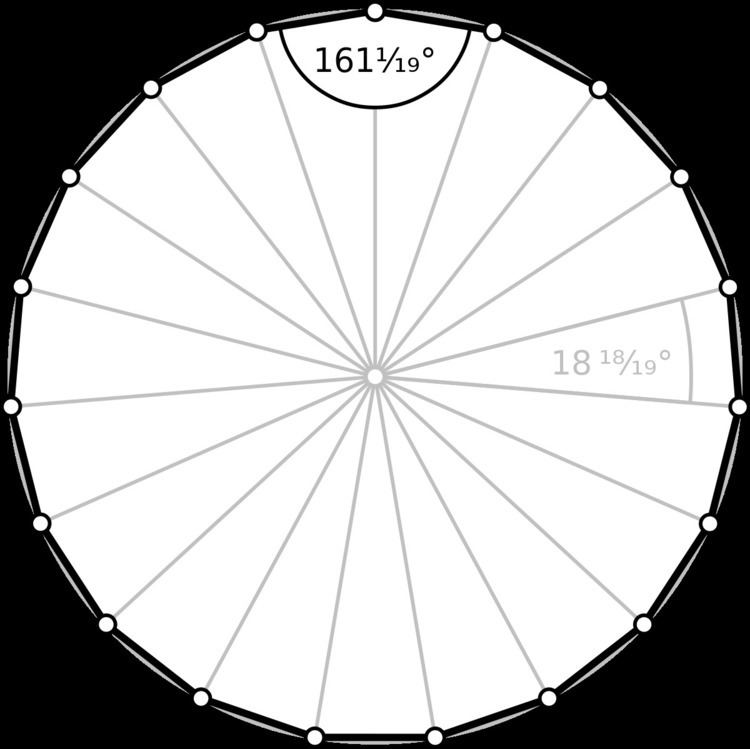Type Regular polygon Schläfli symbol {19} Dual polygon Self | Edges and vertices 19 Internal angle (degrees) ≈161.052° | |
 | ||
Symmetry group Dihedral (D19), order 2×19 | ||
In geometry an enneadecagon or 19-gon is a nineteen-sided polygon. It is also known as an enneakaidecagon or a nonadecagon.
Contents
Regular form
A regular enneadecagon is represented by Schläfli symbol {19}.
The radius of the circumcircle of the regular enneadecagon with side length t is
Construction
As 19 is a Pierpont prime but not a Fermat prime, the regular enneadecagon cannot be constructed using a compass and straightedge. However, it is constructible using neusis, or an angle trisector.
Another animation of an approximate construction.
Based on the unit circle r = 1 [unit of length]
Example to illustrate the error
Symmetry
The regular enneadecagon has Dih19 symmetry, order 38. Since 19 is a prime number there is one subgroup with dihedral symmetry: Dih1, and 2 cyclic group symmetries: Z19, and Z1.
These 4 symmetries can be seen in 4 distinct symmetries on the enneadecagon. John Conway labels these by a letter and group order. Full symmetry of the regular form is r38 and no symmetry is labeled a1. The dihedral symmetries are divided depending on whether they pass through vertices (d for diagonal) or edges (p for perpendiculars), and i when reflection lines path through both edges and vertices. Cyclic symmetries in the middle column are labeled as g for their central gyration orders.
Each subgroup symmetry allows one or more degrees of freedom for irregular forms. Only the g19 subgroup has no degrees of freedom but can seen as directed edges.
Related polygons
A enneadecagram is a 19-sided star polygon. There are eight regular forms given by Schläfli symbols: {19/2}, {19/3}, {19/4}, {19/5}, {19/6}, {19/7}, {19/8}, and {19/9}.
Petrie polygons
The regular enneadecagon is the Petrie polygon for one higher-dimensional polytope, projected in a skew orthogonal projection:
